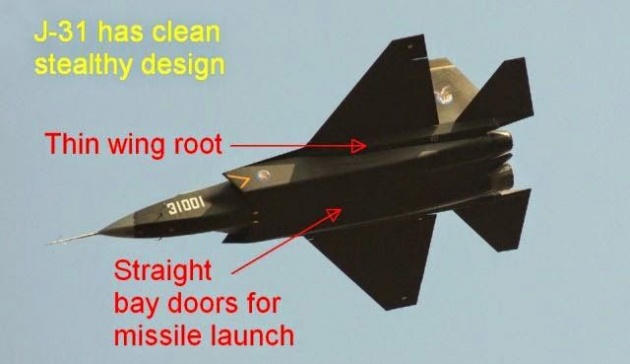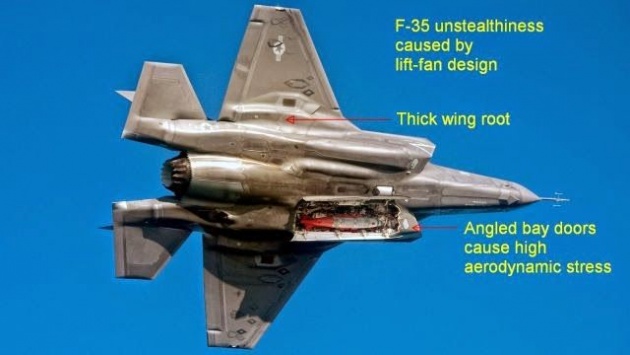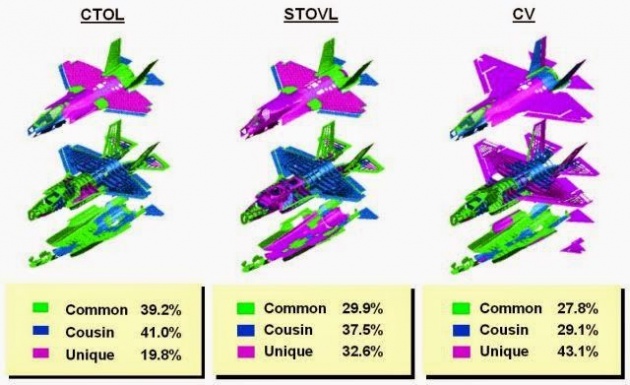The Chinese J-31 has a thin straight wing root. "Thin" means a small surface area for reflecting radar waves. "Straight" conforms with facet design to minimize reflection direction.
The American F-35 has a thick wing root. Thick means more surface area for radar reflection. Also, the F-35 wing root is roundish. Round is terrible for stealth. It means multiple directions for radar reflections. [Note: "Continuous curvature" is like a duck bill and not related to round.]
All three F-35 versions share a common airframe. The STOVL version (or F-35B)requires a lift-fan and leads to an unstealthy thick wing root and angled bay doors.
A fundamental problem with the F-35 design is the specification to accommodate a vertical-takeoff lift-fan for the F-35B STOVL version. Since all three versions of the F-35 must have the same basic airframe, we see the sameunstealthy characteristics on all F-35 versions.
A fundamental problem with the F-35 design is the specification to accommodate a vertical-takeoff lift-fan for the F-35B STOVL version. Since all three versions of the F-35 must have the same basic airframe, we see the sameunstealthy characteristics on all F-35 versions.
Due to the F-35 airframe that can support a lift-fan (whether it is actually present on the A and C versions is not relevant), all F-35s have a thick wing root. The thick wing root is not stealthy. The J-31 has a much thinner wing root and it is stealthier.
Also, the middle of the F-35 bottom fuselage is reserved for the lift-fan exhaust. This means the F-35 bay doors have to be skewed. This is bad aerodynamics (due to increased air resistance) and lead to much heavier hydraulics on the doors to push/keep it open at high speed. The increased weight leads to degraded F-35 acceleration and maneuverability performance
Also, the middle of the F-35 bottom fuselage is reserved for the lift-fan exhaust. This means the F-35 bay doors have to be skewed. This is bad aerodynamics (due to increased air resistance) and lead to much heavier hydraulics on the doors to push/keep it open at high speed. The increased weight leads to degraded F-35 acceleration and maneuverability performance
Finally, due to the lack of room, the F-35 weapon bays bulge outward. There is a lack of space, because the center fuselage is reserved for the lift-fan and exhaust duct. The bulging F-35 weapon bays are not stealthy. It degrades the imperative of facet-shaping stealth.
In conclusion, the Chinese J-31 stealth fighter design is superior to the American F-35. The F-35 is less stealthy, because its specification requires a fuselage to accommodate a lift-fan


In conclusion, the Chinese J-31 stealth fighter design is superior to the American F-35. The F-35 is less stealthy, because its specification requires a fuselage to accommodate a lift-fan






